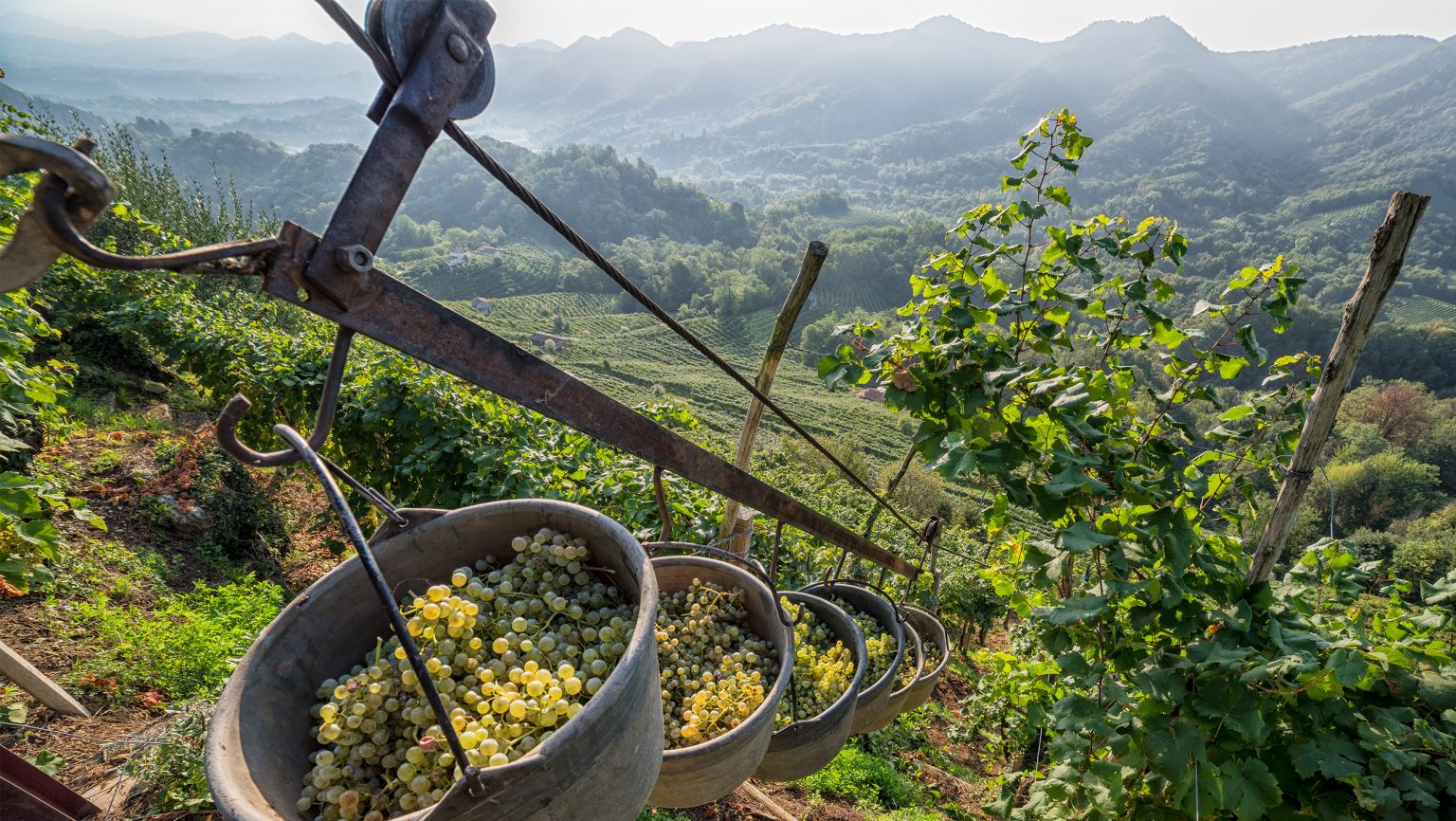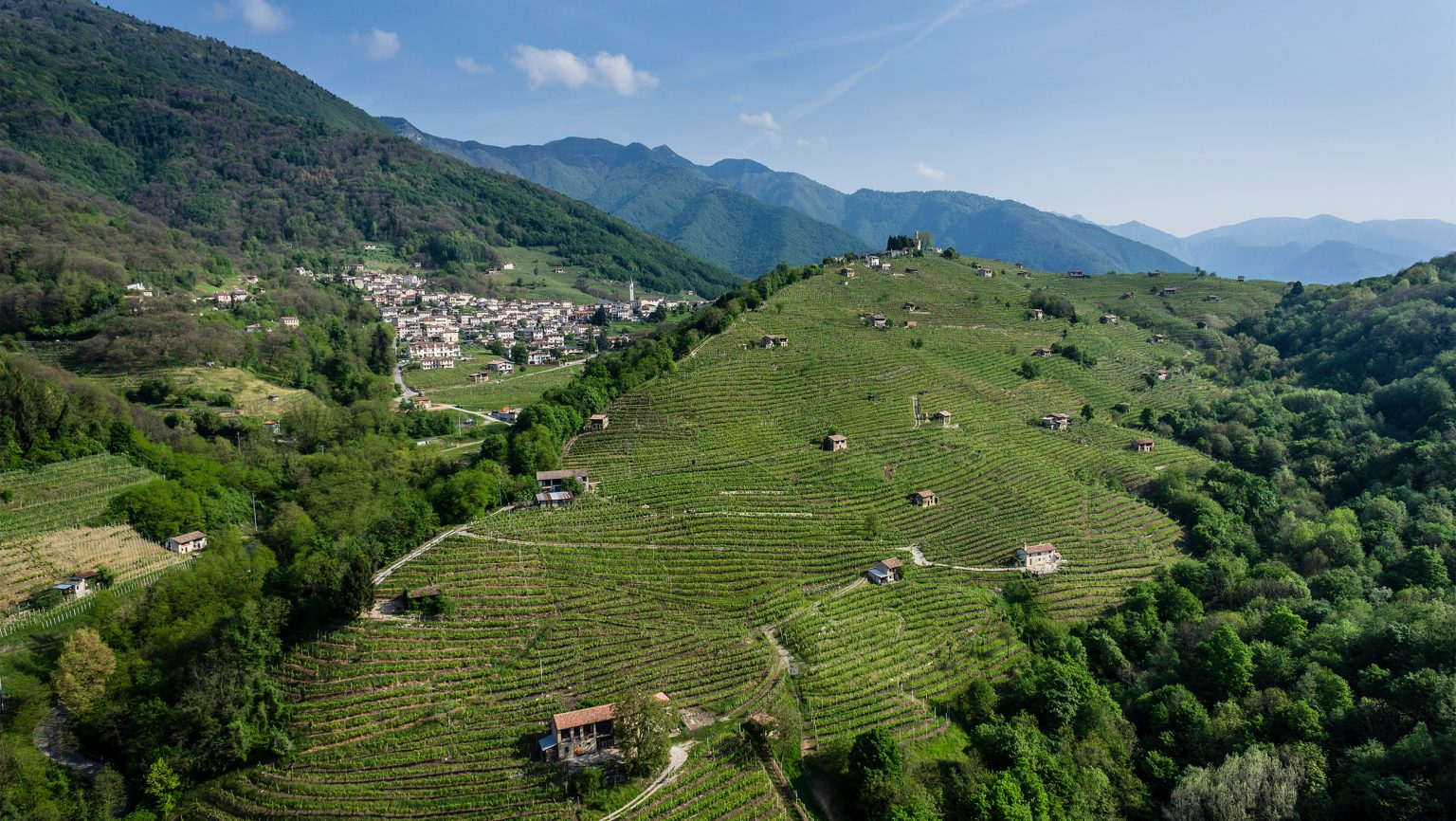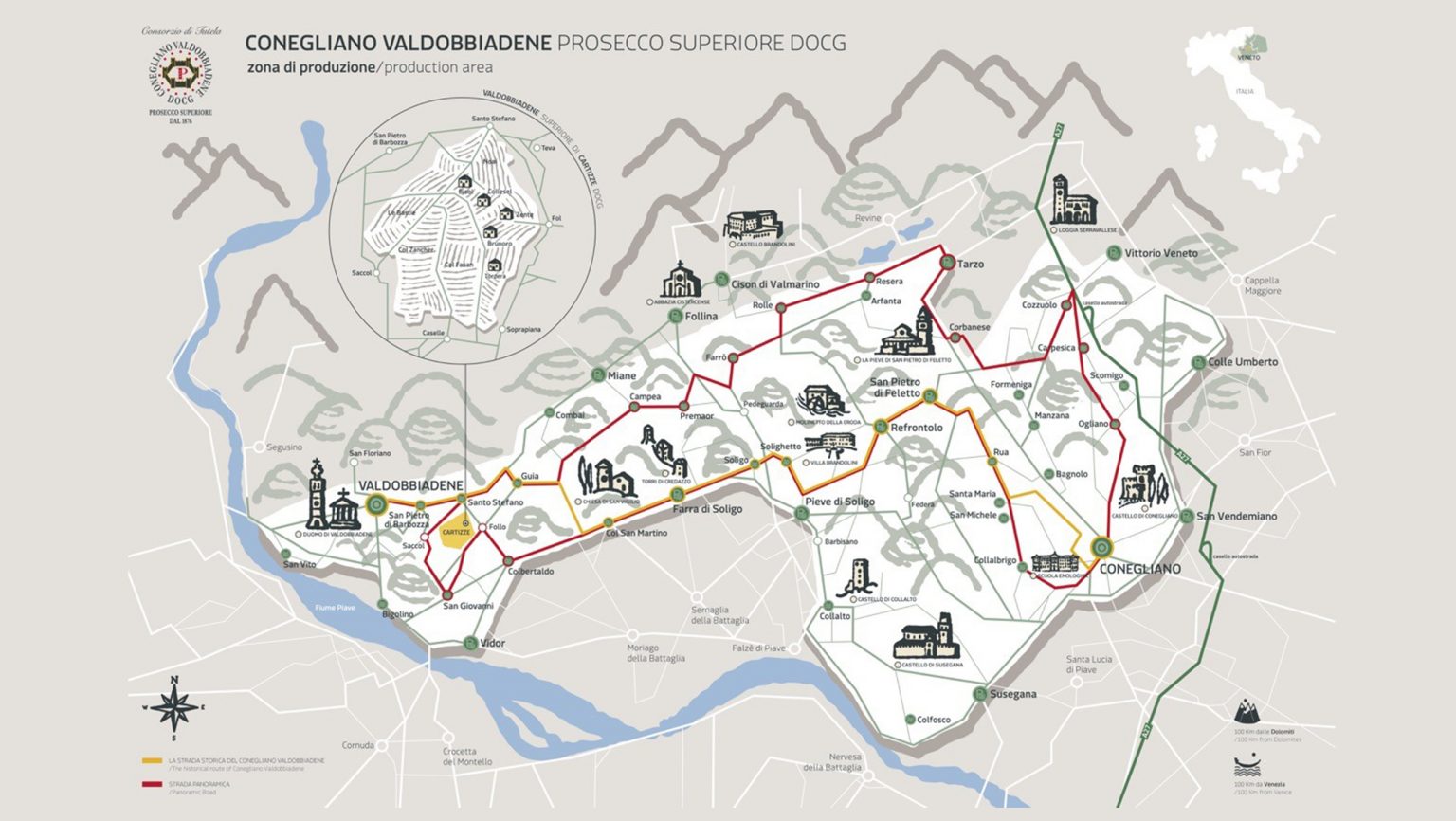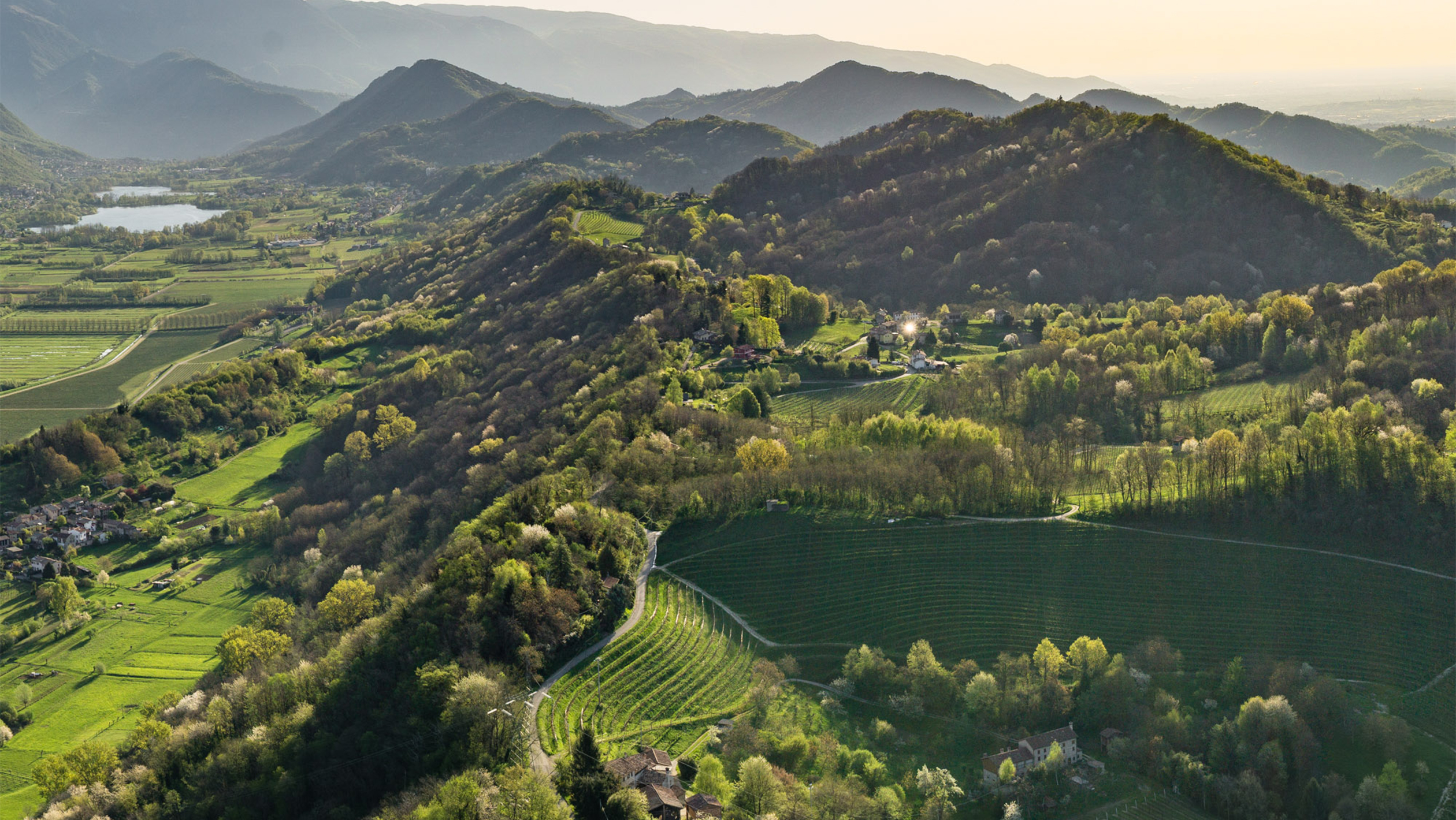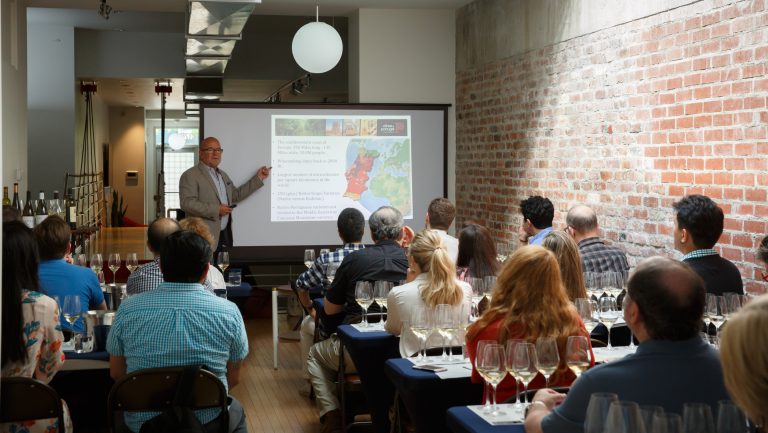This advertising content was produced in collaboration with our partner, Conegliano Valdobbiadene Prosecco Superiore DOCG.
If any wine requires no introduction, it’s Prosecco. Or does it? The category has skyrocketed in popularity, eclipsing Champagne as the world’s best-selling sparkling wine for several years running. Ironically, while Prosecco has come to signify one thing to its mass of fans—fizzy wine that’s fun, low-key, and uncomplicated—it is largely dismissed by the trade as “cheap and cheerful.” Yet that easygoing commercial appeal is just one part of the true Prosecco story.
In essence, not all Proseccos are created equal. While the details might not be obvious to the average consumer, that reality is actually inscribed into Italian wine law, which reserves a special status for Prosecco’s finest wines. Entitled to the “DOCG” designation, the highest level of quality in the Italian hierarchy, these “Superiore” examples can be considered Prosecco’s “Grand Cru” expressions.
Despite its impressive history—in 2019, UNESCO recognized “the Prosecco Hills of Conegliano and Valdobbiadene” as a World Heritage Site—there remains a general lack of awareness in America about its wines, with many lumping them in with the broader Prosecco category.

Don’t miss the latest drinks industry news and insights. Sign up for our award-winning newsletters and get insider intel, resources, and trends delivered to your inbox every week.
Elevation is key. Most Proseccos in the market today hails from the large expanse of flatland vineyards that comprise the DOC Prosecco area. Representing roughly 80 percent of the region’s overall production, these entry-level wines have come to define the category for a whole generation of drinkers, but as it turns out, they represent the base of the Prosecco quality pyramid. Anthony Giglio—who as a corporate wine speaker for American Express has broad experience pouring bubblies for large audiences—observes, “The overwhelming popularity of Prosecco and its generally reasonable pricing make it ubiquitous, so it’s become natural for people to shrug and think they’re all the same.”
For a deeper insight into Prosecco’s real range, it’s useful to revisit the specific corner of northeastern Italy that comprises the sparkling wine’s ancestral home.
At Prosecco’s Epicenter, Two Villages
Just an hour’s drive north of Venice (at least, by the standards of Italian motorists), the vineyards surrounding the historic villages of Conegliano and Valdobbiadene lay claim to one of Italy’s oldest sparkling wine cultures. It’s here, among the steep, rolling hillsides that Conegliano Valdobbiadene Prosecco Superiore DOCG, to use its official name, was first born. With its artisanal ethos and traditional farming culture, the area has always been the source of Prosecco’s finest and most authentic wines, but it wasn’t until 2009 that it received official DOCG status.
Terroir is at the root of the official upgrade for the Prosecco Superiore DOCG zone, driven by distinctions in both setting and soil. Though they’re often described as one contiguous zone, Vinitaly scholar and sommelier Iris Rowlee draws a distinction between the “younger, richer soils” of Conegliano, to the east, which yield “broader, more structured wines, with richer fruit,” and those of Valdobbiadene to the west. Once an ancient seabed, Valdobbiadene’s steeper slopes and fossilized soils give added aromatic delicacy, as well as what Rowlee describes as “a very fine minerality that you can easily distinguish as unique to that area.”
Indeed, as the DOCG classification forges ahead in its second decade, the top expressions emerging from the Superiore zone today deserve a closer look from wine professionals.
Prosecco Goes ‘Grand Cru’
All it takes is a trek up the area’s precariously steep slopes to understand what sets Prosecco Superiore DOCG apart from its DOC peers. According to Chicago-based sommelier Alpana Singh, the hillside exposure of the area’s vineyards offer an elevated take on the local Glera grape, on both the figurative and literal levels.
“There’s a reason why this specific patchwork of vineyards is considered the classic zone for Prosecco,” Singh explains. “Over hundreds of years, the area’s growers figured out that the higher altitude provides the ideal conditions in which to grow Glera. The environment is perfectly suited for that grape in a way that you’re just not going to find at the lower levels.”
In addition to offering better drainage, lower yields, and optimal ripeness, those precipitous inclines (some of which reach gradients of nearly 70 percent) make mechanization all but impossible, affording growers no choice but to work by hand. The result? A far more nuanced and complex version of Prosecco that possesses “an intensity and purity of flavor” that could only come from one place, Giglio explains. Rather than a radically different take on the category, however, it signals more of an amplification. Imagine all the positive qualities associated with basic Prosecco—crystalline fruit, bright acidity, fresh flavors of peach and green apple—but cranked up to ten, plus an extra dimension of minerality that is the distinct expression of its hillside terroir.
The ‘Rive’ Movement: Terroir Mapped Out
Terroir might not be the first word that springs to mind when it comes to Prosecco. But with its diverse mosaic of soil types and microclimates, the DOCG area of Conegliano Valdobbiadene offers a textbook example of terroir-driven site expression. As the area continues to redefine its identity in terms of sense of place, the next step of that evolution is already coming into focus.
First demarcated in 2009, the region received approval in 2019 to further refine and identify 43 single-vineyard designations, or “Rives,” each corresponding to specific hillsides known for imparting a distinct signature to their wines. Similar in spirit to the “crus” of Burgundy or Barolo and governed by strict standards of production, including lower yields, these hand-harvested, vintage-dated examples represent the apotheosis of Prosecco’s place-based paradigm.
A growing trend—in 2019, over 2 million DOCG Rive-designated bottles were produced, destined for export markets across the globe—the Rive category offers consumers the chance to experience Prosecco in a completely new way. “You’re able to explain to your guests that they’re tasting these particular grapes from this particular slope planted a certain exposure that is tucked into a hillside surrounded by these specific hazelnut groves,” Rowlee notes.
At a time when audiences are ever-more curious about the provenance of what’s in their glass, these site-specific wines check off all the right boxes for industry professionals to showcase Conegliano Valdobbiadene Prosecco Superiore’s diversity. And for clues as to the future of the Rive movement, look no further than their forerunner, Cartizze, a pentagon-shaped hillside vineyard codified back in 1969. Cartizze’s prized 108 hectares are divided among about a hundred producers for whom their wines labeled Superiore di Cartizze represent their tête-de-cuvée.
Why DOCG Is Splurge-Worthy
Considering the current costs for other premium sparkling wines, one might fear that these ambitious Italian examples might sacrifice one of the category’s greatest assets: affordability. Yet even the most elevated Rive-designated wines represent only a modest increase in price.
According to Singh, the associated jump in quality more than warrants the relative splurge, and it just requires a little extra effort to communicate that to consumers. If most drinkers have pigeonholed Prosecco as falling into the sub-$15-per-bottle range on retail shelves, off-premise pricing for “Prosecco Superiore DOCG” wines hover closer to $20 (or perhaps $25 for Rive expressions). “It’s not at all difficult to get people to drink Prosecco. The challenge is getting them to spend just a little bit more,” Singh observes. “So the onus is on us as professionals to explain that for just a few extra dollars, they’re actually getting a tremendous deal.”
This accessible pricing allows beverage directors greater flexibility to incorporate higher-end expressions into their wine programs. Compared to champagne or Franciacorta, for instance, which often price themselves out of typical by-the-glass territory, Prosecco Superiore DOCG perfectly lends itself to glass pours and tasting menu pairings.
“Sure, it might take your by-the-glass pricing up to $15 instead of the usual $9,” Iris Rowlee explains. “But when you’re able to offer something totally unique from a specific single-vineyard Rive that introduces people to this whole other side of the region, well, that makes you a pretty happy somm.”

Dispatch
Sign up for our award-winning newsletter
Don’t miss the latest drinks industry news and insights—delivered to your inbox every week.


